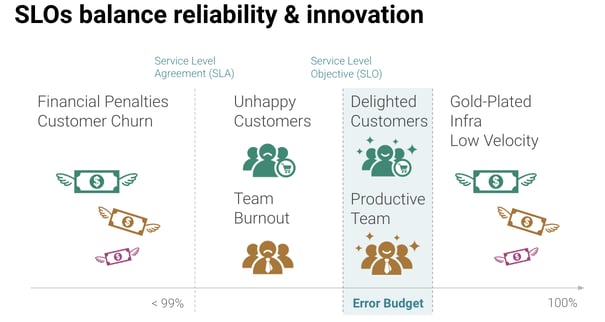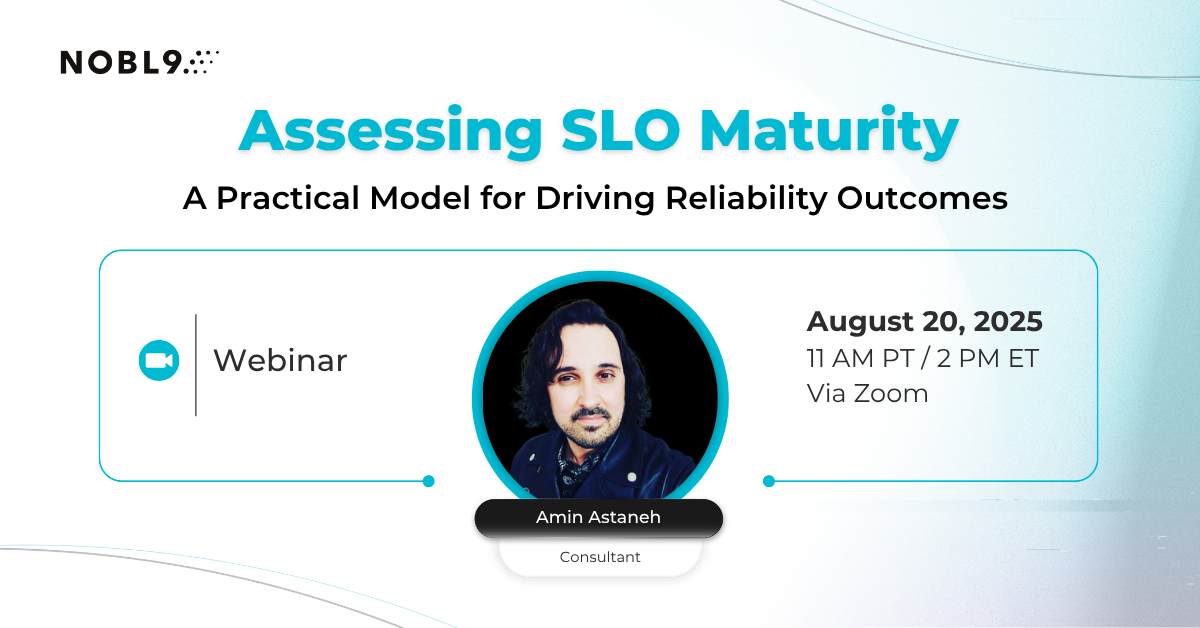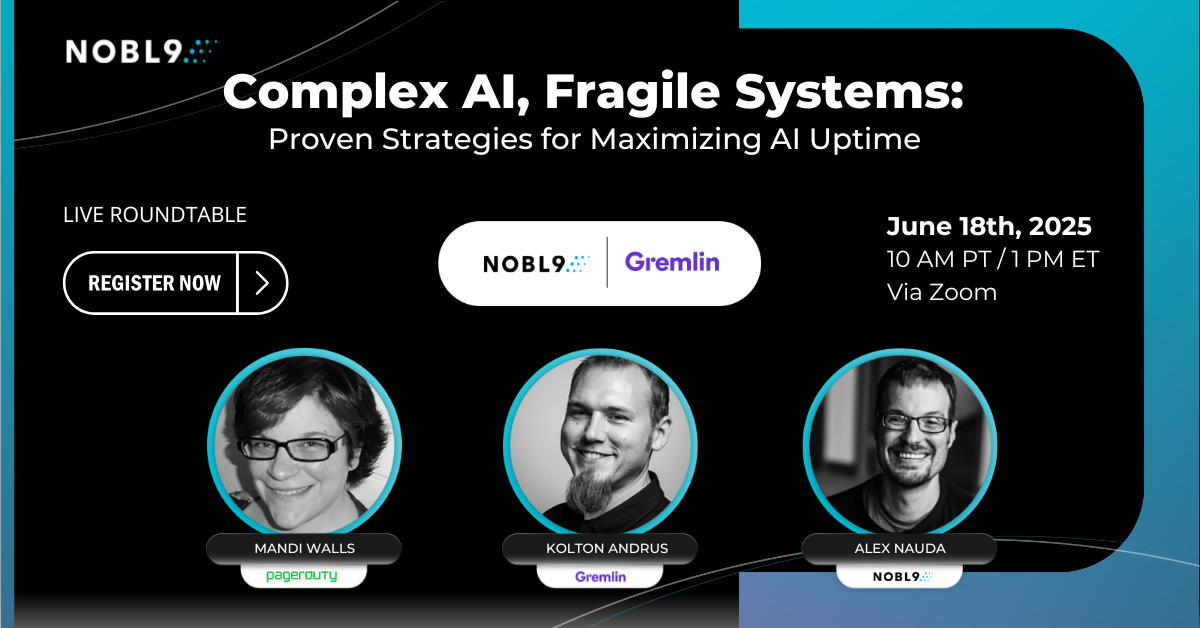| Author: Marcin Kurc
Avg. reading time: 2 minutes
It’s 2020, and your customers expect a lot of you: they expect the most innovative services, up-to-date websites, easy to use software applications, and intuitive mobile interfaces. And, they expect all of those things to be available and running efficiently upon their demand. If customers don’t get what they want when they want it, they take their business elsewhere.
So, as CEO, you have a triple challenge: Delight your customers with high-quality services and rapid iteration of innovative features, while maintaining reliable delivery that meets customer expectations, and controlling costs to maximize ROI and the bottom line.
Piece of cake? Of course not! But SRE can help. Site Reliability Engineering (SRE) is a concept pioneered by Google (adopted by others and applicable to everyone) that is transforming the way product managers, business line managers, software engineers, and IT operators work together to please the customer.
Piece of cake? Of course not! But SRE can help.
In your organization, you may have noticed that the technical teams find themselves working at cross purposes with the business: On the one hand, product managers and business line managers want to maximize the speed and agility in getting new applications and product features to market; on the other hand, your technology teams need to maximize the reliability and quality of the infrastructure needed to provide those features consistently and safely to the customer. Both have valid priorities, and often it falls on you to make the call of where to invest.
Fortunately, SRE offers a way to institutionalize the best each these perspectives have to offer and develop an operating model and culture where all “sides of the house” collaborate to make data-driven decisions that are centered on customer delight.
What would your organization look like after adopting the SRE approach? Here’s a glimpse of the future state once SRE is implemented, scaled, and operating smoothly:

Customer delight is king. Everyone in your organization understands that retaining customers is just as valuable (if not more so) than acquiring new customers and that it takes both to succeed. Now your software engineers and IT operators are working together, sharing responsibility and ownership of attaining customer satisfaction objectives.
Customer satisfaction is studied and articulated in measurable terms. Responsible stakeholders from across the organization are involved in the process of setting service level objectives (SLOs) that align with corporate business objectives. These data-centered SLOs dictate appropriate decisions and allocation of resources, especially when tradeoffs and compromise between departments are necessary.
Decision-making is powered by real data that really matters. Decision-makers are given less but more relevant data that truly correlates to business processes and business impact. No more guessing is needed because the data provided has a high signal to noise ratio. As a result, decisions are being made quickly and efficiently without unnecessary friction.
IT resources are being allocated wisely, with a full understanding of the risk/reward tradeoff. Investments are designed to make a service reliable enough, but no more reliable than it needs to be. SRE has helped you reduce spend on unimportant infrastructure initiatives, and redirect those resources to adding features, cleaning up technical debt, and reducing operational costs.
Smooth operations are the norm, so employee and customer satisfaction is at an all-time high. Automation is being used to automatically eliminate toil, hassle, and wasted time. Most potential problems are identified and resolved before they arise, which has greatly improved the working environment, especially for IT operators.
Your product development and DevOps teams are running faster, innovating more than ever before. SRE is helping developers accelerate time to market, delight customers, and improve your competitive position.
Bottom line: SRE is a no-brainer—a practical, powerful, and culturally palatable way to maximize customer satisfaction and revenue.
Now that you understand why a CEO should care about SRE, let’s discuss dollars and sense. See “How to Explain SRE to Your CEO.”
Image source: Cristofer Jeschke on Unsplash









.png?width=1200&height=628&name=Building%20Reliable%20E-commerce%20Experiences%20(34).png)

.png?width=1200&height=628&name=Building%20Reliable%20E-commerce%20Experiences%20(33).png)






Do you want to add something? Leave a comment